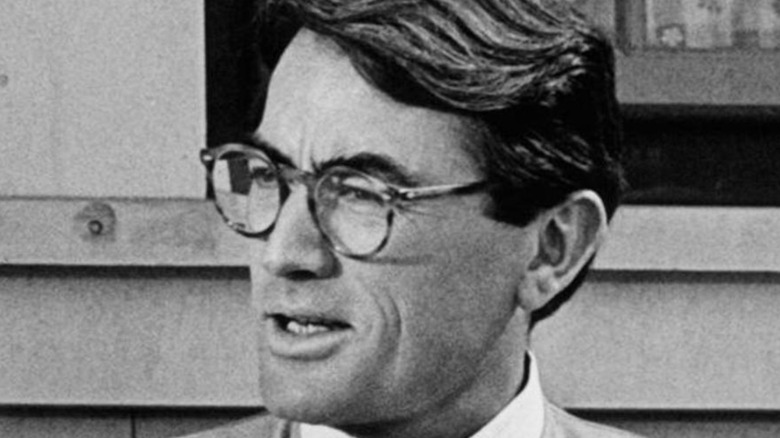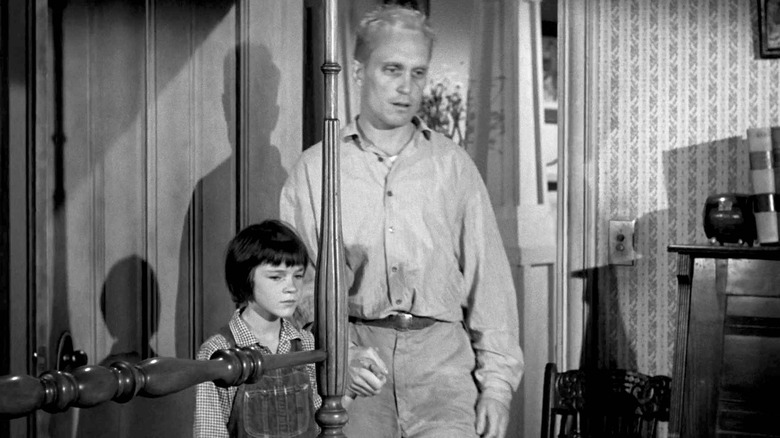This Is Where To Kill A Mockingbird Was Actually Filmed
It goes without saying that "To Kill A Mockingbird" is one of the most influential novels in American history. Written by Harper Lee and originally published in 1960, the novel made a large impact on American culture as it denounced the systemic racism and oppression that was endemic in both the justice system and social life of 20th Century Alabama. More specifically, it tackled these issues through the eyes of its child protagonist, Scout Finch, as she watches her lawyer father Atticus defend Tom Robinson, a Black man on trial who is falsely accused of raping a white woman.
Similarly, the novel's 1962 film adaptation made its own impression on American culture. It may not be required reading (or viewing in this scenario) like the novel is in so many American schools, but it was nonetheless an important film. However, considering how important Southern culture was to the novel, it makes one wonder if the filmmakers did the extra legwork to make the shoot authentic. One would hope that a film discussing such serious themes would do its utmost to make its world and characters feel real.
Of course, a big part of making a film feel authentic is nailing the setting. And with the film's very specific setting, there are only a few places the filmmakers could have gone to get it right. Unfortunately, "To Kill A Mockingbird" was actually filmed far away from its deep Southern setting.
Sweet home Hollywood, where the sky is so blue
Much to the chagrin of every film buff down in the South, "To Kill A Mockingbird" was not filmed anywhere in or near Alabama. However, that doesn't mean that the filmmakers didn't take their time to make the fictional town of Maycomb seem authentic. According to Movie-Locations.com, the filmmakers found that Maycomb's inspiration, the real-life town of Monroeville, was far too different at the time of filming to make it into a believable 1930s-era location. So, they opted instead to build a mock town in the Universal Backlot in Hollywood.
Most of the structures built for the film are not left standing today. Only the house of Boo Radley (Robert Duvall), the boogeyman-esque neighbor who is inevitably revealed to be a good (if troubled) soul, still stands on Elm Street (via Studiotour.com), though it's been remodeled for other productions such as CBS's series "Ghost Whisperer." While it's disappointing that the film wasn't actually shot in Alabama, we have to hand it to the creative team for designing a set that really did give the impression of a small Southern town.

